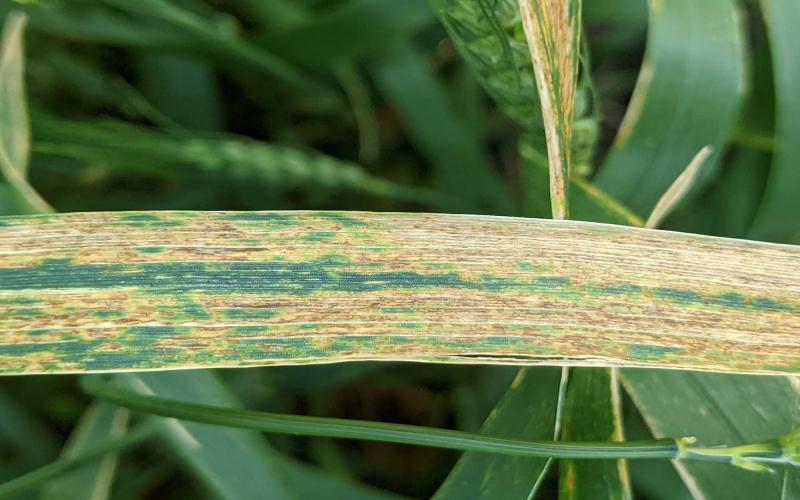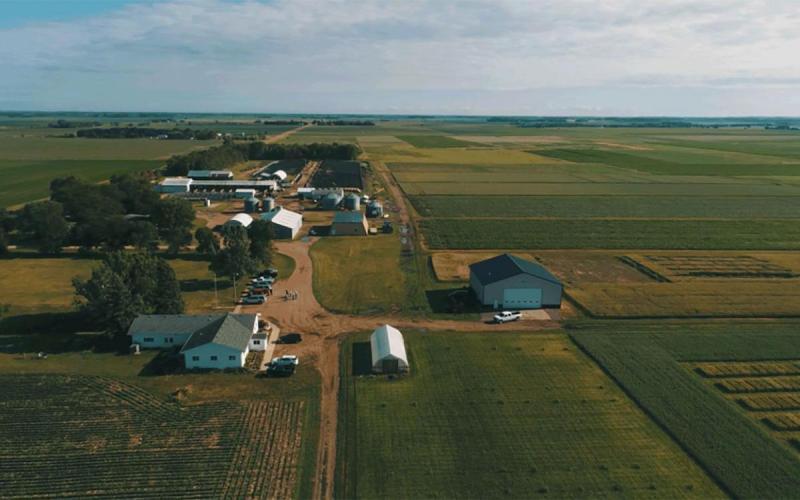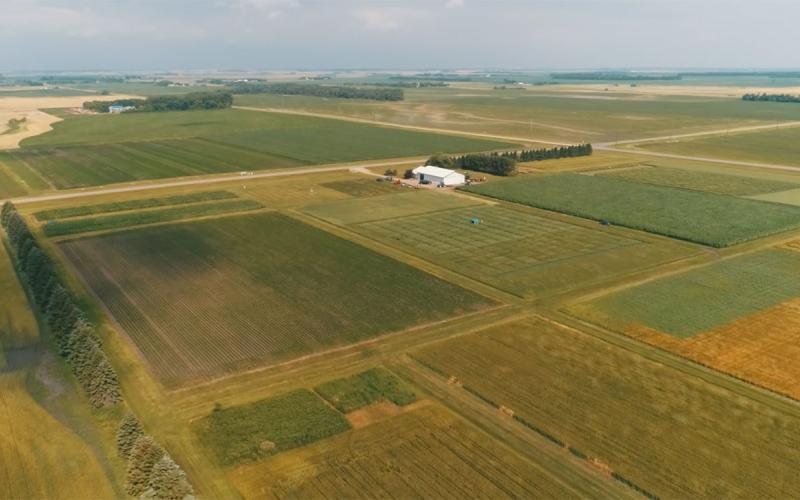Written collaboratively by Madalyn Shires, Ciera Kotaska, and Connie Strunk.
Tar Spot on Fall Corn Decorations
In late October, tar spot was identified on dried field corn being sold for decoration at a big box store in eastern South Dakota. This corn was sourced from both Canada and the United States. Tar spot has been documented on corn decorations sold in Arkansas, Texas, Mississippi, and other states this year. This fungal disease can be identified by the black lesions that are on both sides of the leaf (Figure 1).
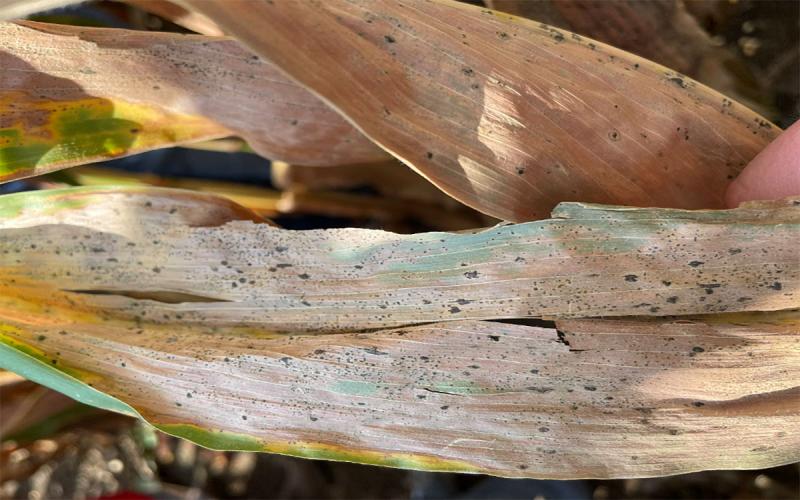
Why is this a concern?
While the primary spread of tar spot is through windblown spores from other states, there is a small chance of the disease coming from corn decorations that are not properly disposed of. The University of Minnesota has performed research and found that tar spot loses viability at room temperature after 6 to 8 months. However, tar spot remains viable at freezing temperatures for the same length of time. This suggests the possibility that tar-spot-infected corn decorations could serve as additional source for the disease in 2025. Research is ongoing to determine if the tar spot pathogen can survive the extreme South Dakota winters.
Tar Spot Mimics
It is important to keep in mind that the dried corn could also have dirt or sooty mold (which grows on corn as plant dries down) on it. These issues (dirt or sooty mold) can be confused with tar spot, as they can look dark in color. The key to distinguish tar spot from other look-a-likes is that tar spot lesions will be on both sides of the leaf, and they will be black in color (see Figure 1).
What should you do if you find tar spot on your decorations?
If you find tar spot on your decorations, immediately bag the corn in a large trash bag. The bagged corn should be disposed of through your regular trash service (not yard waste). This will allow for the pathogen to be exposed to high temperatures and buried in areas away from corn fields.
2024 Tar Spot in South Dakota
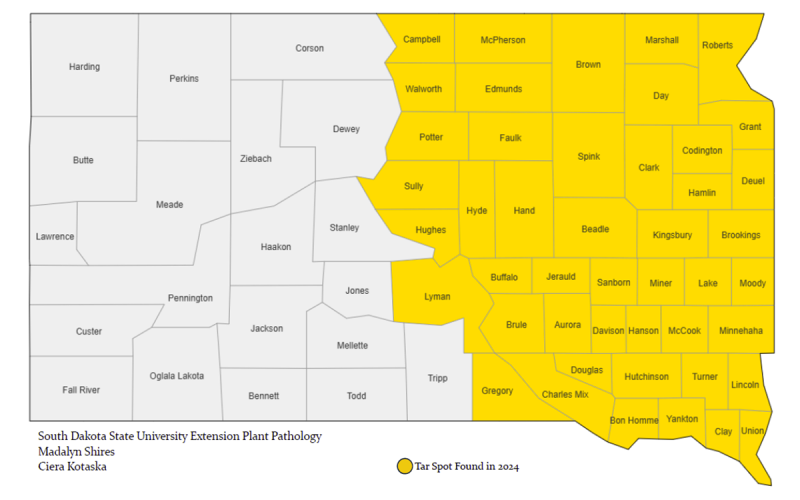
Tar spot was found in varying severity in 46 counties (Figure 2) in South Dakota this year, a staggering increase from three counties in 2023 and six counties in 2022. Ten counties in the southeastern portion of the state had moderate levels of tar spot (Union, Clay, Yankton, Turner, Bon Homme, Charles Mix, Minnehaha, Douglas, Hutchinson, Lincoln), while the rest had low levels of infection. The disease was first found in Minnehaha County in late August 2024. The disease developed late enough in the growing season that no yield impacts were observed. However, corn producers in counties with moderate levels should consider tolerant hybrids to help manage the disease, as the disease may be starting to establish in those areas.
Questions?
If you suspect that you have found tar spot, please reach out to Madalyn Shires, Extension Plant Pathology Specialist for questions, disease identification, and more information.
